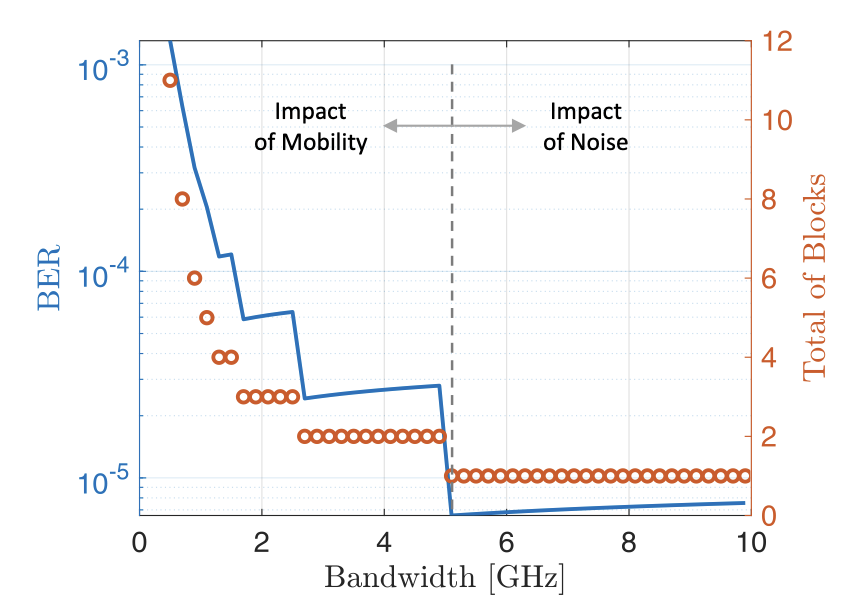Literature Database Entry
sanneck2000packet
Henning Sanneck, "Packet Loss Recovery and Control for Voice Transmission over the Internet," PhD Thesis, School of Electrical Engineering and Computer Science (EECS), TU Berlin (TUB), October 2000. (Advisor: Adam Wolisz; Referees: Adam Wolisz and Radu Popescu-Zeletin)
Abstract
"Best effort" packet-switched networks, like the internet, do not offer a reliable transmission of packets to applications with real-time constraints such as voice. Thus, the loss of packets impairs the application-level utility. For voice this utility impairment is twofold: on one hand, even short bursts of lost packets may decrease significantly the ability of the receiver to conceal the packet loss and the speech signal play-out is interrupted. On the other hand, some packets may be particular sensitive to loss as they carry more important information in terms of user perception than other packets. We first develop an end-to-end model based on loss run-lengths with which we can describe the loss distribution within a flow. The packet-level metrics derived from the model are then linked to user-level objective speech quality metrics. Using this framework, we find that for low-compressing sample-based codecs (PCM) with loss concealment isolated packet losses can be concealed well, whereas burst losses have a higher negative perceptual impact. For high-compressing frame-based codecs (G.729) on one hand the impact of loss is amplified through error propagation caused by the decoder filter memories, though on the other hand such coding schemes help to perform loss concealment by extrapolation of decoder state. Contrary to sample- based codecs we show that the concealment performance may "break" at transitions within the speech signal. We then propose mechanisms which differentiate between packets within a voice data flow to minimize the impact of packet loss. We designate these methods as "intra-flow" loss recovery and control. At the end-to-end level, identification of packets sensitive to loss (sender) as well as loss concealment (receiver) takes place. Hop-by-hop support schemes then allow trading the loss of one packet, which is considered more important, against another one of the same flow which is of lower importance. As both packets require the same cost in terms of network transmission, a gain in perceived quality is obtainable. We show that significant speech quality improvements can be achieved while still maintaining a network service which is virtually identical to best effort in the long term.
Quick access
Contact
Henning Sanneck
BibTeX reference
@phdthesis{sanneck2000packet,
author = {Sanneck, Henning},
title = {{Packet Loss Recovery and Control for Voice Transmission over the Internet}},
advisor = {Wolisz, Adam},
institution = {School of Electrical Engineering and Computer Science (EECS)},
location = {Berlin, Germany},
month = {10},
referee = {Wolisz, Adam and Popescu-Zeletin, Radu},
school = {TU Berlin (TUB)},
type = {PhD Thesis},
year = {2000},
}
Copyright notice
Links to final or draft versions of papers are presented here to ensure timely dissemination of scholarly and technical work. Copyright and all rights therein are retained by authors or by other copyright holders. All persons copying this information are expected to adhere to the terms and constraints invoked by each author's copyright. In most cases, these works may not be reposted or distributed for commercial purposes without the explicit permission of the copyright holder.
The following applies to all papers listed above that have IEEE copyrights: Personal use of this material is permitted. However, permission to reprint/republish this material for advertising or promotional purposes or for creating new collective works for resale or redistribution to servers or lists, or to reuse any copyrighted component of this work in other works must be obtained from the IEEE.
The following applies to all papers listed above that are in submission to IEEE conference/workshop proceedings or journals: This work has been submitted to the IEEE for possible publication. Copyright may be transferred without notice, after which this version may no longer be accessible.
The following applies to all papers listed above that have ACM copyrights: ACM COPYRIGHT NOTICE. Permission to make digital or hard copies of part or all of this work for personal or classroom use is granted without fee provided that copies are not made or distributed for profit or commercial advantage and that copies bear this notice and the full citation on the first page. Copyrights for components of this work owned by others than ACM must be honored. Abstracting with credit is permitted. To copy otherwise, to republish, to post on servers, or to redistribute to lists, requires prior specific permission and/or a fee. Request permissions from Publications Dept., ACM, Inc., fax +1 (212) 869-0481, or permissions@acm.org.
The following applies to all SpringerLink papers listed above that have Springer Science+Business Media copyrights: The original publication is available at www.springerlink.com.
This page was automatically generated using BibDB and bib2web.

